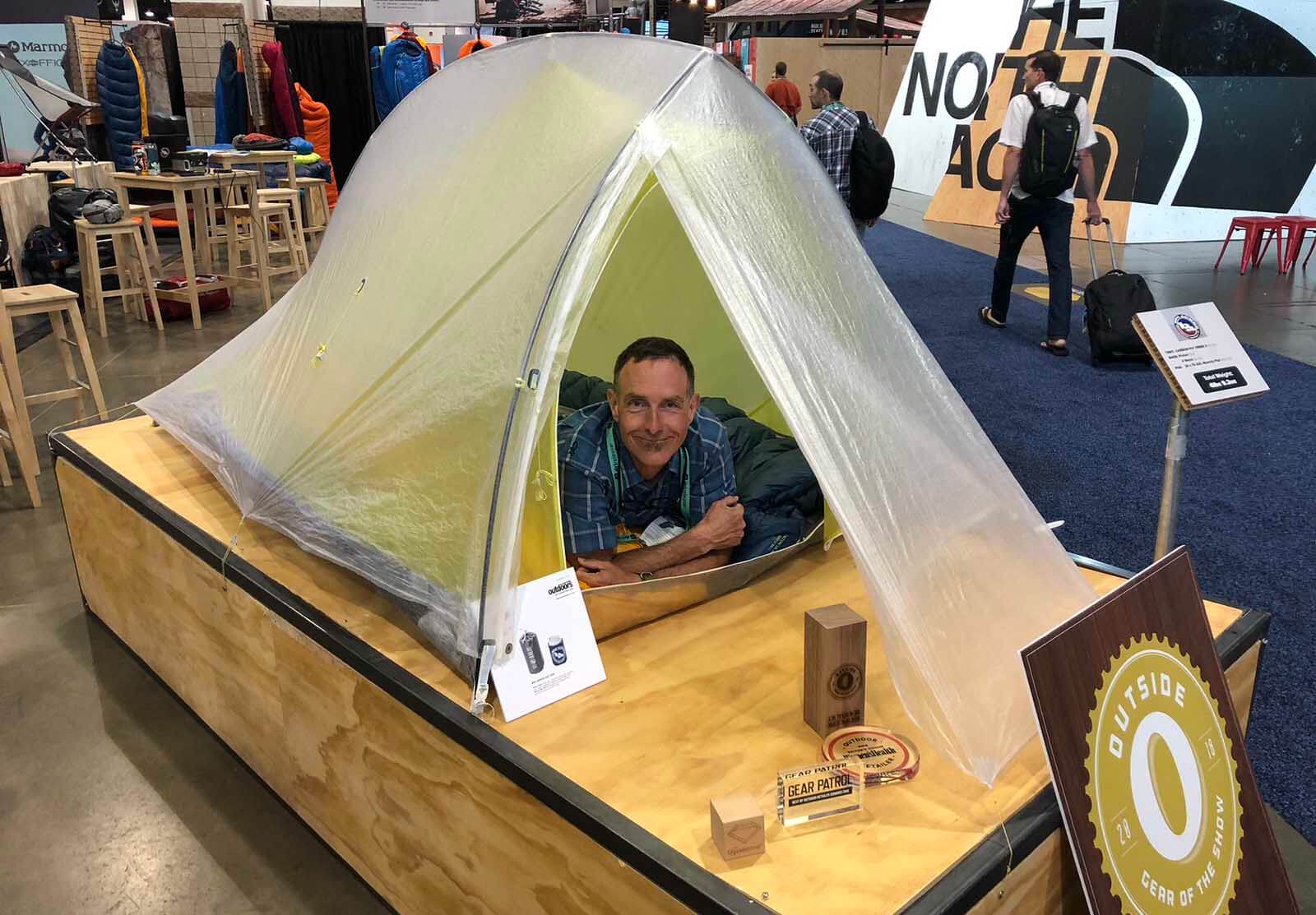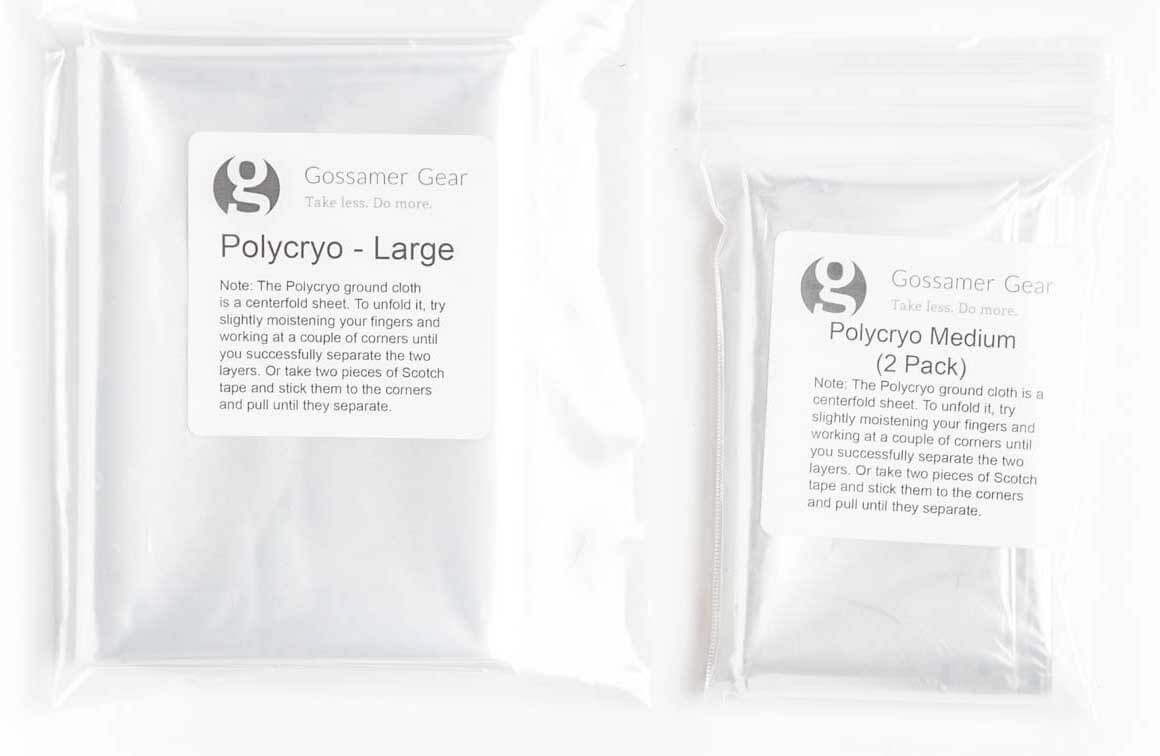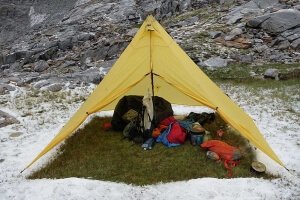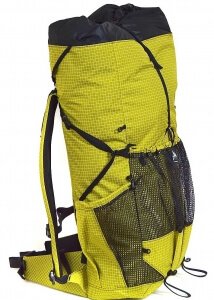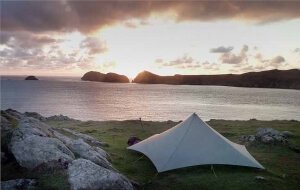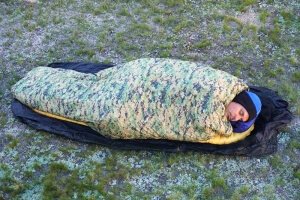The 2020 Big Agnes Copper Spur HV UL2 Tent is our #1 pick for an all around, 2 person ultralight backpacking tent. Find out why in this review!
An ultralight pyramid tent is larger, lighter, and more wind-worthy than any other shelter. Choose from among the best of the best.
The Durston X-Mid 2P Tent is a great 2-person tent with a winning combination of low cost, low weight, a ton of livable area & great storm performance
The 1.9 lb REI Co-op Flash Air 2 Tent is an exceptionally light user-friendly, 2-person ultralight tent that’s also a great value.
At a scant 1.8 pounds the Hyperlite Mountain Gear Dirigo 2 Tent is a serious contender for the title of “strongest, lightest and most storm-worthy backpacking tent” on the market.
The new Big Agnes Fly Creek HV 2 Carbon with Dyneema tent pictured above weighs just 1 lb 2 oz for a two-person, freestanding, double-walled tent with a full pole set! No trekking poles required. The incredibly popular, roomy and livable Tiger Walls series drops to 1.5 pounds with the new Big Agnes Tiger Wall 2 Carbon with Dyneema! And finally, the Big Agnes Scout 2 Carbon with Dyneema Tent is less than ¾ pounds. These are just a few of the new and very light tents that Big Agnes announced for Spring of ’19 at the Outdoor Retailer Summer Market trade show this month.
Be sure to checkout or Guide to:
- Best Backpacking Tent 2020 | Lightweight & Ultralight for a full selection of our top picks for the best tents for 2020, including some interesting Dyneema Tent options including some sub 1 pound Dyneema tents with a whopping 64 ft2 area about double the area of most 2-4 pound ultralight backpacking tents.
What you need to know about Big Agnes Tent Models – new Carbon With Dyneema vs. Platinum vs. Classic UL
Big Agnes now has 3 versions for most of their lightest tents. In order of heaviest to lightest they are the Classic UL, Platinum and the new Carbon With Dyneema version. This post clearly explains the major differences Big Agnes’ three lines of tents Classic UL vs. Platinum vs. Carbon With Dyneema as well as discussing the the pros, cons and cautions for each of three versions. This should help buyers make an informed choice. In summary:
- Classic UL uses 20d nylon fabric and aluminum poles. The least expensive and likely the most durable.
- Platinum uses much lighter and more delicate 7d fabric for the fly and floor and the same aluminum poles. This saves ~¼ pound for a 2-person tent and has a modest price increase.
- Carbon with Dyneema uses uber-tech Dyneema Composite Fabric (DCF) lighter carbon fiber poles. This saves ~½ pound or 30% for a 2-person tent but has a substantial price increase! [note: fly fabric is 0.34 oz/yd2 DCF and the floor is 0.51 oz/yd2 DCF]
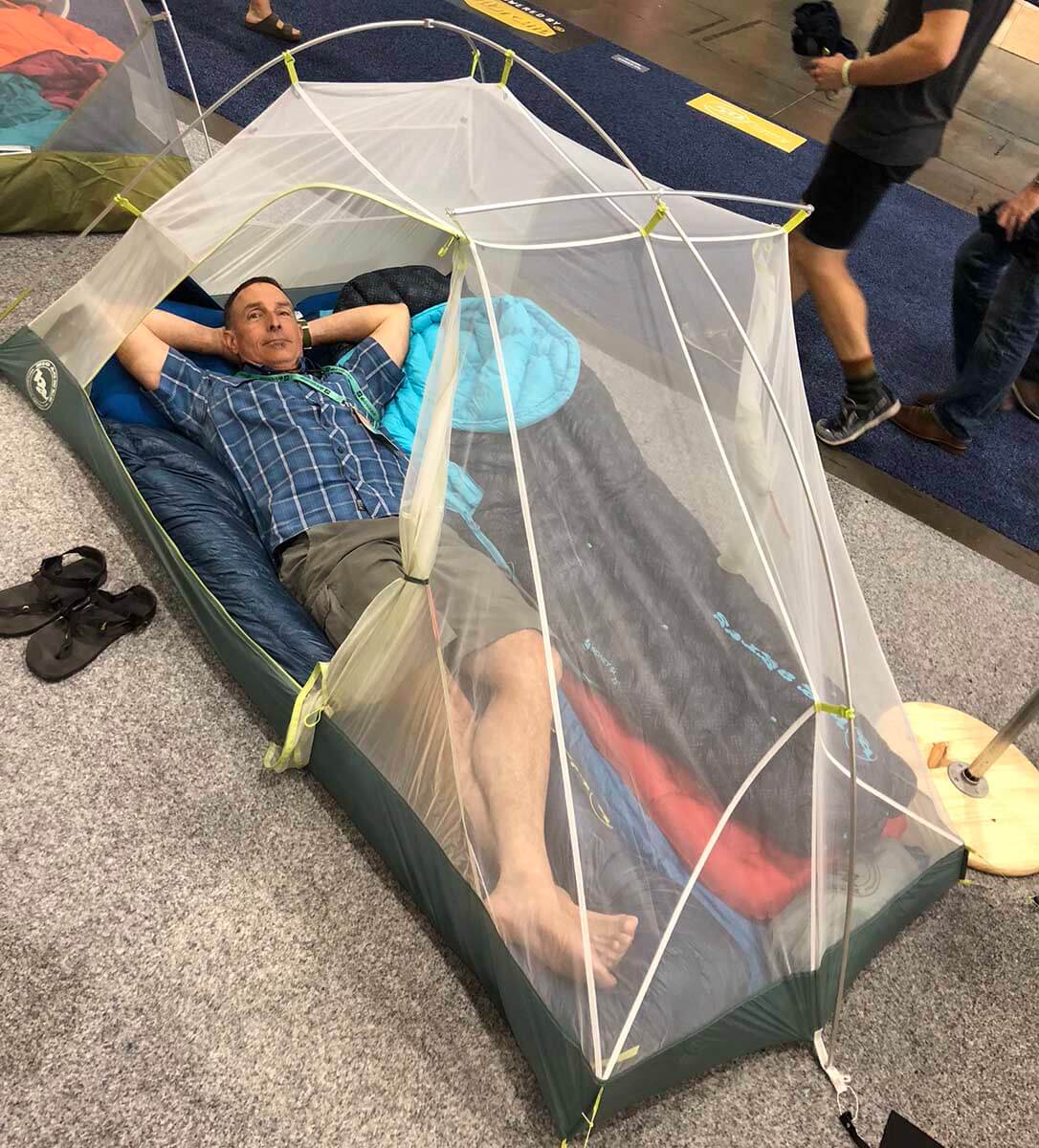
30% weight reduction: For Spring ’19 the highly popular, roomy and livable Tiger Wall UL2 tent will come in a Carbon with Dyneema version reducing its weight by 1/2 pound vs. the “classic” model show in the photo.
Big Agnes Tent – Carbon with Dyneema Version
Big Agnes, known for making some of the lightest backpacking tents, shaved even more weight from their lightest models. For spring of 2019 their “Carbon Collection” includes:
- 1 lb 14 oz (850g): Tiger Wall 2 Carbon with Dyneema Tent. That’s a 30% reduction in weight vs. the “classic” Tiger Wall Tent. My guess is that this tent will be the big seller in this lineup for its more spacious interior and a door for each person.
- 1 lb 2 oz (501g): Fly Creek HV 2 Carbon with Dyneema (lead photo for this post). This is an astonishing weight for a 2-person, double-walled, free-standing tent that does not rely on trekking poles! (Note that this shelter is snugger than the Tiger Wall and has a single door).
- 11 oz (312g): Scout 2 Carbon with Dyneema. That’s under a pound for a 2-person shelter with 27 ft2 of floor area! (Albeit it requires use of trekking poles, and it is a single door, single walled shelter that is more prone to condensation than the double walled versions above.)
The obvious omission in the Carbon Collection lineup are the Big Agnes Copper Spur HV UL series tents, the former mainstay of Big Agnes’ Ultralight tents. This is almost certainly due to the immense popularity of the new Big Agnes Tiger Wall tents.
Note: Durability these lighter tents, Platinum and Carbon with Dyneema Tents may hinge on a suitable footprint / groundsheet. Read more on this important topic below, including an extremely light $9 footprint hack.
The Three Big Agnes Tent Models Exlpained
In summary, Big Agnes now has 3 levels of weight and price for the same tent. These are from heaviest to lightest: Classic UL, Platinum and new for Spring ‘16 Carbon with Dyneema. The major reasons for lower weight and higher cost are included below using the Tiger Wall 2-person tent as an example:
- 2 lb 3 oz (992g) $400 for Classic UL version, theTiger Wall UL2 which uses 20d nylon fabric and aluminum poles
- 1 lb 15 oz (878g) $550 for the new Platinum version that uses a much lighter 7d for the fly and floor and aluminum poles
- 1 lb 9 oz (709g) $1,000 for the Carbon with Dyneema version that uses uber-tech Dyneema Composite Fabric (DCF) lighter carbon fiber poles. [fly fabric is 0.34 oz/yd2 DCF and the floor is 0.51 oz/yd2 DCF]
For 2019 the Fly Creek HV, Tiger Wall and Scout tents will be available in both Platinum and Carbon with Dyneema versions. In addition, the Copper Spur tents will be available in Platinum but not in Carbon with Dyneema.
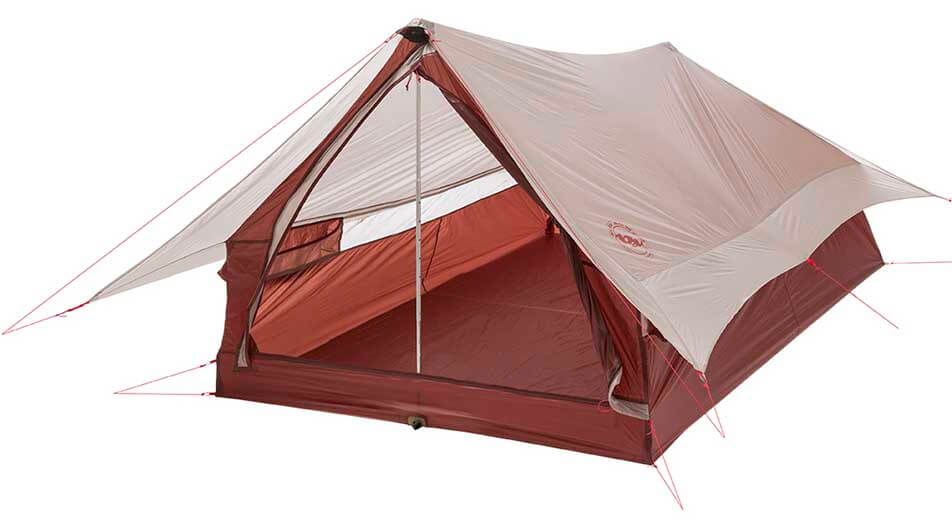
For 2109 the Big Agnes Scout 2 Carbon with Dyneema tent will come in at a scant 11 oz (312g). That’s under a well under pound for a 2-person shelter with 27 ft2 of floor area! [the tent pictured is the older silnylon model.]
Classic UL vs. Platinum vs. Carbon With Dyneema – Pros, Cons and Cautions
Classic UL – These tents are already among the lightest conventional, double-walled free-standing tents on the markets. While the lowest cost of the three lines they are still among some of pricier tents on the market due to their light weight. The 20d fabric used for the rainfly and wall/floor of the tent is likely the lightest fabric that will survive use by casual users (e.g. those people not experienced in the use and care of ultralight camping gear.) This fabric will likely remain waterproof and undamaged for a number of seasons of use, especially if you use a Big Agnes Footprint or a $9 Gossamer Gear Polycro Footprint under it.
Platinum – These tents use a much lighter 7d fabric used for the rainfly and wall/floor. This saves about 4 oz (¼ pound) and increases the price a few hundred dollars. And unless you are sleeping on nice soft grass, it almost requires you use a Big Agnes Footprint or a $9 Gossamer Gear Polycro Footprint under it. In addition, the lighter fabric requires that you use more care operating zippers, pitching and un-pitching the tent, etc to keep from damaging the fabric.
Carbon with Dyneema – These tents use uber-tech Dyneema Composite Fabric (DCF) for the rainfly and wall/floor and carbon fiber (vs. aluminum) poles to save ~1/2 lb or 30% vs a UL Classic Tent. DCF incredibly strong and waterproof and light. In addition, it’s stiff and has very low stretch when wet making it ideal for use in shelters. That is, DCF does not sag when wet fabric and you don’t need to re-tension the the tent in the rain. Downsides for DCF is that it is insane expensive and has only OK abrasion and puncture resistance.
In summary, the Carbon with Dyneema has clear advantages over the Classic UL version for its lighter weight and stiffer lower stretch fabric. It will be up to individuals to determine if those advantages are worth the significant increase in price. The advantages of the Platinum version vs. the Classic UL version are less clear.
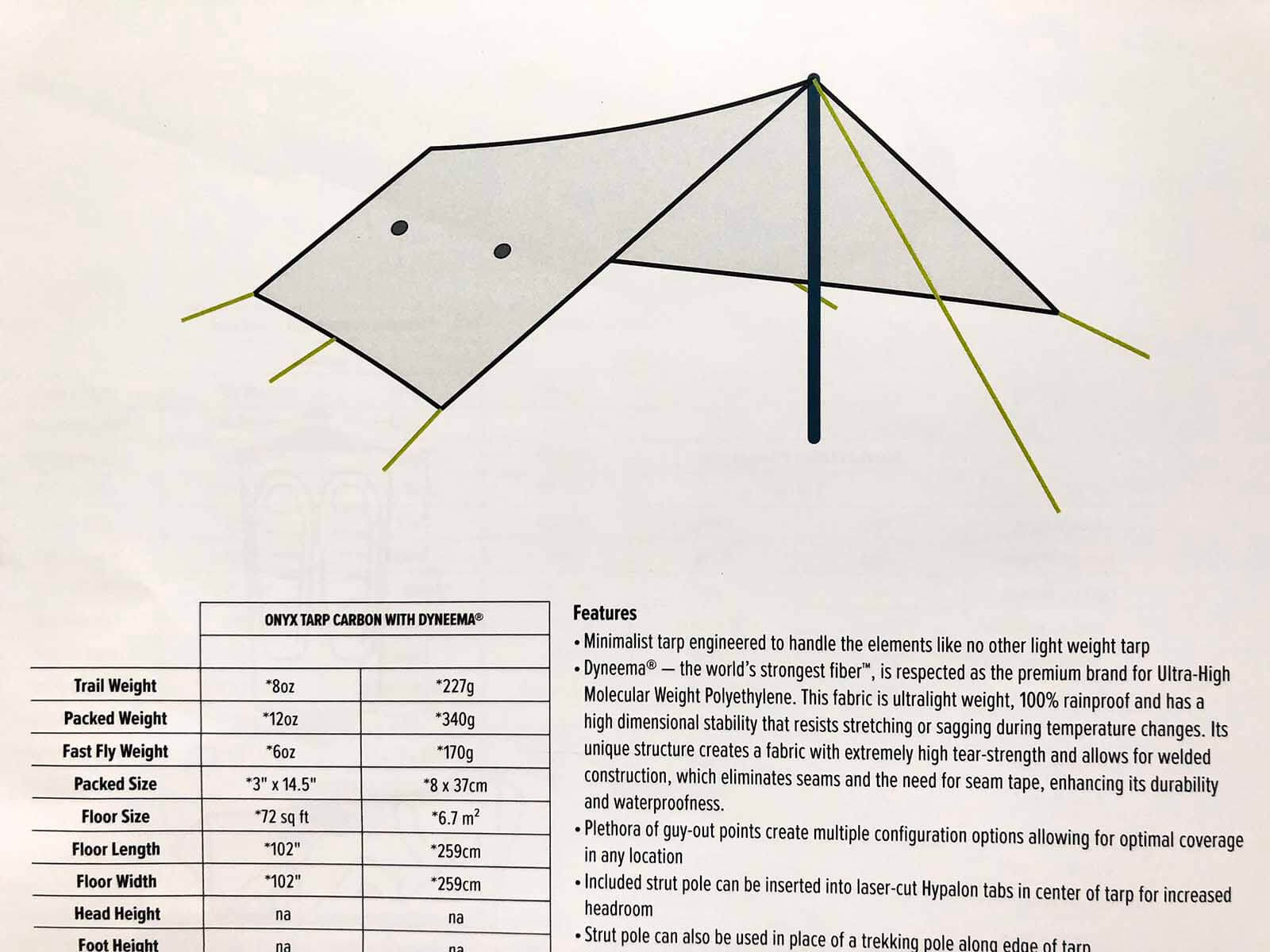
The Onyx Tarp Carbon with Dyneema is only 6 oz (170g) when used with trekking poles and covers 72 square feet. That’s super roomy for two people!
Durability of Big Agnes Carbon with Dyneema and Platinum Tents may hinge on a suitable footprint
Success of these tents may well rely on what BA puts under the floor to protect the more delicate DCF fabric tent floor. As of this writing BA has not revealed the weight and type of footprints that will be available for Carbon Collection tents. A too heavy footprint could negate much of the weight savings (right now a Big Agnes Tiger Wall UL2 Footprint weighs 6 oz and cost $70). On the other hand, not using a footprint could quickly damage your floor if you are not careful and/or experienced at campsite selection.
Use an off-the-shelf Polycro Footprint
The good news is you don’t need to wait for BA to solve this problem. To protect the floor of these very light tents, I would recommend putting a $9 Gossamer Gear Polycro Footprint under it. This multilayer, cross-linked polyolefin film weighs less than 4 oz and is much stronger and more durable than the typical painters plastic sheet you’d get at a hardware store. It’s also ~ 1/2 the weight and 12% the cost of a Big Agnes footprint. It should last for weeks of use. When it starts to wear it can easily be replaced by another $9 footprint.
Durability Verdict Not in for Big Agnes Carbon with Dyneema and Platinum Tents
Finally, neither the Big Agnes Platinum Tents (only a few models out last year), and the Big Agnes Carbon with Dyneema Tents (not due until Spring ’19) have had sufficient field testing to determine their long term durability and waterproofness. It will be interesting to hear the feedback from consummate backpackers & thru-hikers that use these shelters for weeks or months on end vs. the casual weekend backpacker.
DCF has been used for years by cottage manufactures for Tarps and Pyramid shelters, and even floors on Bivy Sacks. I own and love many of these shelters. They have been all over the world with me from Patagonia to Alaska. But none of these simple DCF shelters are tents with their complex of poles and multitude of panels and seams. By making complex tents with DCF, BA is entering uncharted territory. To give BA the benefit of the doubt, they have been one of the most successful manufactures of very light tents. As such, I wish them continued success with their new Carbon with Dyneema tents. I look forward to testing the Tiger Wall 2 Carbon with Dyneema as soon as it is available.
Disclaimer
This post contains affilate links. If you make a purchase after clicking on the these links, a portion of the sale helps support this site at no additional cost to you. I do not receive compensation from the companies whose products are listed. For product reviews: unless otherwise noted, products are purchased with my own funds. I am never under an obligation to write a review about any product. Finally, this post expresses my own independent opinion.
Used without the inner-nest, the Sierra Designs High Route 1 FL Tent deserves a serious look as an innovative, 2-PERSON pyramid shelter. But if you frequently use the outer shelter and inner-nest together, you might consider other options. E.g. lighter 1-person shelters like the TarpTent Notch, or Mountain Laurel Designs Solomid XL; or roomier, freestanding 2-person “true-tents” like the REI Quarter Dome 2 or Big Agnes Copper Spur HV UL 2 Tent. Even so, the outer shell alone is a very nice pyramid shelter and Sierra Designs and Andrew Skurka deserve a lot of credit for thinking outside the box.
Quick Spec’s
- The High Route 1 FL is a one-person, two-part shelter. An outer shell (pyramid shelter) and an inner-nest (bug net and floor). When combined they are the equivalent of a double walled tent.
- Shelter has no poles. It uses two trekking poles for structure.
- 2 lb 10 oz for: Outer shell, inner-nest, 8 stakes, 2 stuff sacks and cordage.
2 lb 5 oz min. trail weight (less stakes & stuff sacks)
What is the Sierra Designs High Route 1 FL Tent?
The Sierra Designs High Route 1 FL Tent is really “a pyramid shelter with an inner-nest option.” More specifically, it’s a 2-apex pyramid, meaning that two poles support the shelter at two “pyramid peaks.” A 2-apex pyramid (vs. single apex) provides more vertical walls and therefore more usable living area (in this case enough room for two people). If you want, you can attach the inner-nest, which gives you a floor and mosquito protection. The downside is that this reduces living area (down to 1-person), and significantly increases the time and complexity of setup.
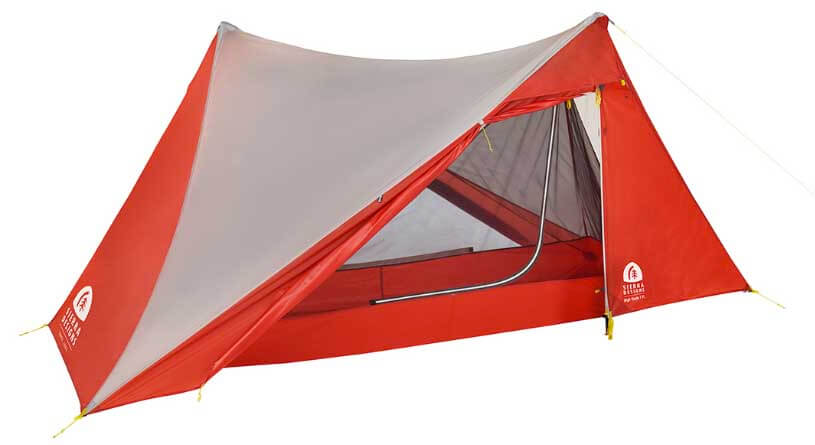
Product shot that shows the integration of outer shell and inner-nest. The back of the “tent” is a mirror image of the front.
What’s Good
- Used separately, I like the outer shell and even the inner-nest. A lot of thought went into their design.
- In particular, the outer shell is an innovative pyramid shelter with lots of room. It could easily sleep 2 in a pinch. The vertical walls greatly increase usable room.
- The High Route has one of the best implementations of using trekking poles to support a pyramid shelter. I really like that the poles are snug against the outside walls. This keeps them entirely out of the living area and door area. In addition it adds to the structural integrity of the vertical walls.
- The dual doors and, two peak vents provide good ventilation.
- Properly guyed out*, the High Route does well in strong winds. (*due to the vertical walls it’s a good idea to anchor the peak guylines with strong Y-stakes solidly in the ground)
- It’s fairly easy to pitch due to its rectangular shape and using standard height trekking poles. (True only for the outer shell when used alone, i.e. no inner-nest.)

The inner-nest (floor and bug netting) for the High Route can work as a stand-alone, stargazing shelter. The picture also better shows the dual apex design of the shelter. Note how the trekking poles are completely clear of the doors and living area.
What’s Not So Good
The High Route is less attractive when you combine the inner-nest with the outer shell
- The combination is heavy for a 1-person non-freestanding tent that uses trekking poles for support.
- In fact, the 1-person High Route is comparable in weight to some 2-person freestanding dome shelters that have a lot more interior room than the High Route and are easier setup. E.g the Big Agnes Copper Spur HV UL 2 Tent or even the comparably priced REI Quarter Dome 2 Tent. (Both have a newer steeper walled design that improves living area.)
- And there are lighter 1 person pyramid with inner-nest shelters like the 27 oz TarpTent Notch, or Mountain Laurel Designs Solomid XL with InnerNest.
- The High Route inner-nest halves your living area and increases overall weight. It also leaves scant “vestibule” area between the inner and outer tents.
- I found attaching the inner-nest a bit awkward, fiddly, and time consuming. There’s lots of clipping and then tension adjustments at every point, since no shock-cordage is used. All this is done crouched on your knees, many times reaching across the tent.
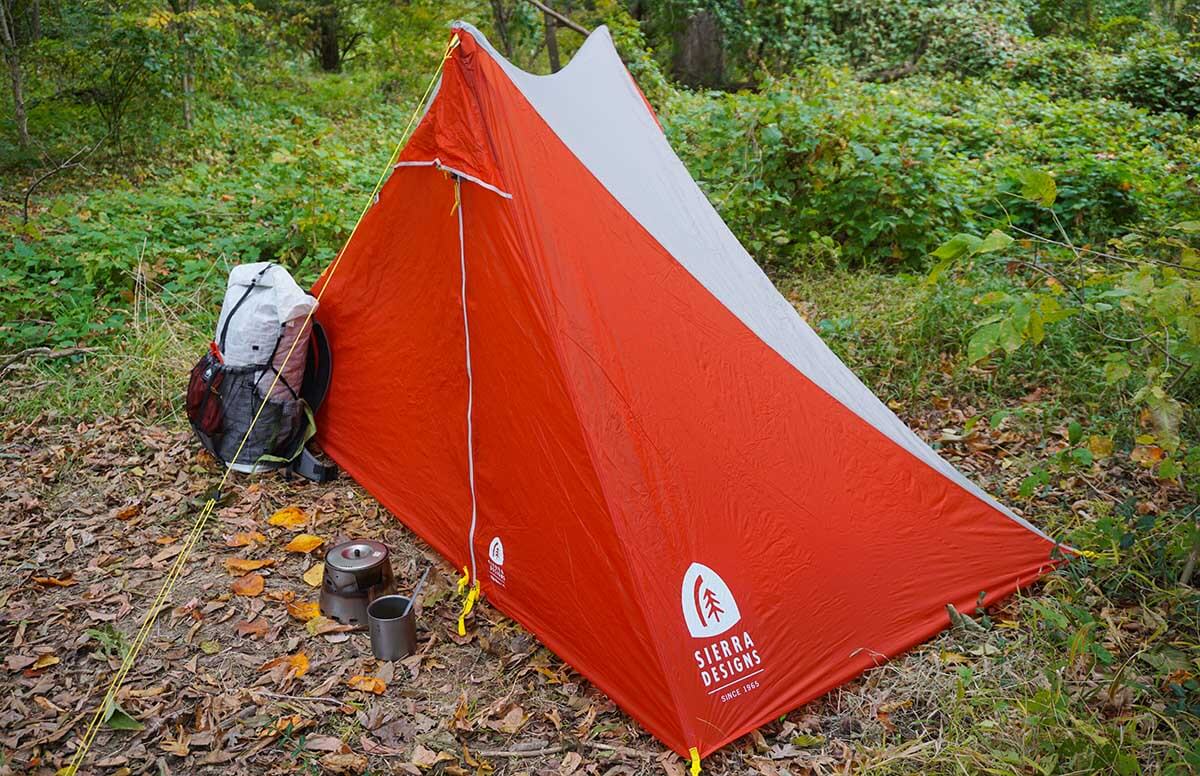
Oblique view of the High Route showing the near vertical front wall, and the two apexes of the shelter. The rear wall (not visable) is a mirror image of the front wall you can see. Due to the vertical it’s a good idea to stake out the front guyline to the apex (lower left guline in photo) with a solid Y-stake if you expect strong winds.
Summary
When used without the inner-nest, theSierra Designs High Route 1 FL Tent is worth a serious look. It is an innovative pyramid shelter that would likely work for two people. It even has dual doors! It’s made roomier by vertical walls and getting the trekking poles out of the living area. At about 12 oz per person (body less stakes is ~24 oz), it’s a reasonably light option for two people.
It’s a shame that Sierra Designs doesn’t sell just the outer shell (pyramid shelter portion) separately like other manufactures, e.g. Hyperlite Mountain Gear, Mountain Laurel Designs and TarpTent. But if you can get the High Route on sale at around $240, you could just buy the whole thing and leave the inner-nest at home.
But, if you think you’ll use the High Route outer shelter and inner-nest together most of the time, you might consider another shelter. Either lighter pyramid shelter with inner-nest combos from Hyperlite Mountain Gear, or the 27 oz TarpTent Notch and Mountain Laurel Designs Solomid XL with InnerNest. Or just getting a 2-person, freestanding, double-walled dome tent like the Big Agnes Copper Spur HV UL 2 Tent or the REI Quarter Dome 2 Tent, which is the same price, sleeps two and is only ½ pound heavier.
Detailed Technical Specifications
My measurements
- 2 lb 10 oz for: Outer shell, inner-nest, 8 stakes, 2 stuff sacks and cordage
- 24 oz Outer Shell (pyramid), 15 oz Inner-Nest
_____________________________________
* Technical Specifications (Sierra Designs)
- Minimum Weight: 2 lbs 5 oz / 1.05 kg
- Packaged Weight: 2 lbs 12 oz / 1.25 kg
- Number of Doors: 2
- Number of Gear Closets: Internal Storage
- Gear Storage Area (Tarp Area – Nest Area): 17.3 ft2 / 1.61 m2 (more of a narrow area around the perimeter than a vestibule)
- Interior Area (Tarp): 36 ft2 / 3.34 m2
- Interior Area (Nest): 18.8 ft2 / 1.75 m2
- Internal Peak Height (Tarp): 48 in / 122 cm
- Internal Peak Height (Nest): 43 in / 109 cm
- Awning Height: 38.5 in / 98 cm
- Length (Tarp): 108 in / 274 cm
- Width (Tarp): 48 in / 122 cm
- Length (Nest): 90 in / 229 cm
- Width (Nest): 30 in / 76 cm
* from the Sierra Designs Site, on the “TECH SPECS” tab
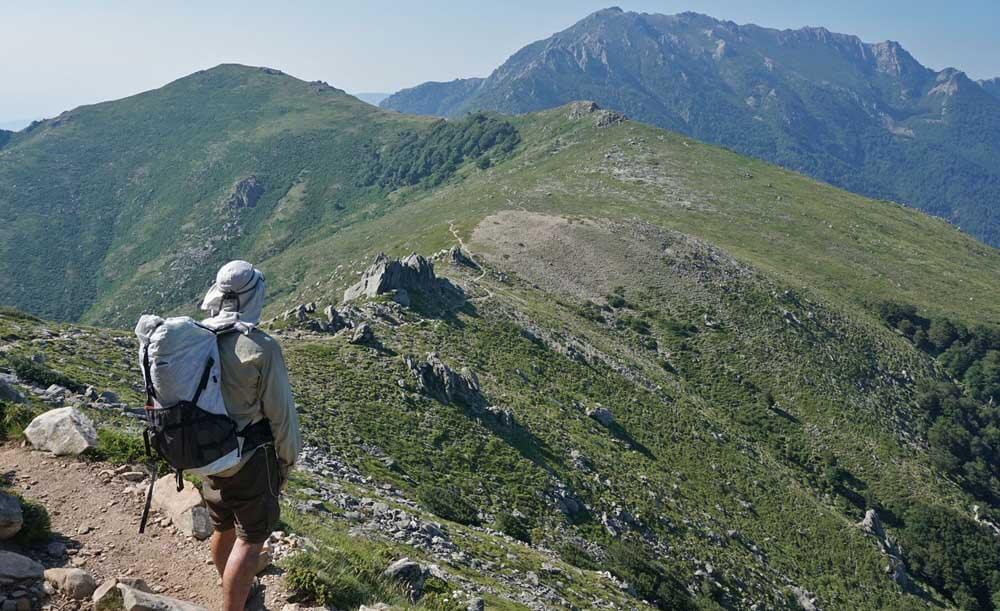
Moving fast and light along the spectacular ridge line of the GR20 in Corsica. A minimal pack (and good pre-trip training) enabled Alison and I to do a 16 day trip in under 8 days. Pictured – the award winning Hyperlite Mountain Gear 2400 Southwest Pack
You make Adventure Alan & Co possible. When purchasing through links on our site, we may earn an affiliate commission at no additional cost to you. Here’s why you can trust us.
Quick ways to reduce backpack weight. A few may surprise you…
- Look at The Big Three: Backpack, Tent/shelter, and Sleep System (sleeping bag, sleeping pad, and ground cloth). You stand to lose a bunch of weight from these: as much as 10 to 12 pounds.
- Take a Backpack that weighs less than two pounds. See our: Best Backpacks for Backpacking and Hiking
- Take a Tent that weighs less than two pounds. See our: Best Backpacking Tents | Lightweight & Ultralight
- Take a Sleeping bag that that weighs less than 1.5 pounds. See our: Buyers Guide to Lightweight Backpacking Quilts & Sleeping Bags
- Look at our 9 Pound Full Comfort Lightweight Backpacking Gear List for more ideas for gear to save weight.
Nine pounds of backpacking gear is all a hiker needs to be safe and warm. Or simply put, this list has better backpacking gear. For over a decade it’s been tested, refined, and updated to reflect only the best and most current backpacking gear now available in 2019. So, if you want to reduce pack weight without reducing comfort, look no further! The hiking gear in this guide is suitable for all 3-season conditions on trips around the world, from Alaska, to Patagonia, to Utah.
- Look on The Backpacking Food Page to save a ton of weight at zero cost
- Get a weather report (the NOAA hourly weather graph is among the most informative and accurate)—then pack for those conditions! Since 90% of backpackers take 90% their trips for 3 days or or less, this weather report should be quite accurate for the short time you are out. This will let you pack a tent, clothing, and sleeping bag appropriate for actual conditions. It will also deter you from taking inappropriate, “what-if-the-worst-happens!” gear, e.g. 6 pound tent, and a +10F sleeping bag for a balmy weather trip on the Appalachian Trail.
- Don’t take extra clothing. e.g. don’t take any more clothing than you can wear at one time.
- Take less: Be disciplined and leave a few items at home that you haven’t used in the last three trips. Put stuff like sunscreen and trail soap in smaller containers.
- Extra Credit: Browse The Gear Lists Page for other ideas and examples to save weight. This will give you a good examples of what type of gear is available and what is a reasonable weight for that type of gear, e.g. around 6-8 ounces for a rain jacket, or around 1.0 ounce for a pocket knife. Think hard if your gear is 2 to 3x heavier than the examples on these lists.
- Read my The Best Hydration — Drink When Thirsty. Use a Sawyer Squeeze Water Filter to drink at the source (lake, stream, etc.). Then only carry a sensible amount to get to your next known water source. I.e. it makes no sense to carry 3 liters of water, almost 7 pounds, when your next water source is only two hours away.
- Remember to have fun! That will at least, lighten your spirit and mood.
How Do I Start?
- Ground yourself in reality: Get all your stuff together and weigh it. If you’re like most conventional hikers, your equipment will weigh around 30 pounds, possibly higher.
- Get individual weights for your heavier items like tents and backpacks. For stuff in the range of a few pounds or less you’ll want to buy an inexpensive digital scale that weighs up to 10 pounds.
- See what you can leave at home. Anything you don’t bring is free weight reduction. Think hard about this one. Do you really need it?
- Put together a spreadsheet (or at least a list) with all your equipment weights. This is an indispensable analysis tool.
- Try to figure out where you’ll get the most “bang for the buck.” e.g. figure out how much a new item costs and divide that by the amount of weight it will save you over your old equipment. Target the items that give you the most weight loss for the fewest dollars.
- Buy on Sale: Don’t try to purchase all your new equipment right away. Many items regularly go on sale or are closed out. Watch carefully over the course of a year and you could save 30 to 70 percent on your equipment.
Possibly the best all-around, lightweight shelter is a pyramid shelter. I have used Pyramid Shelters on trips to Alaska, Patagonia, the Sierras, major European treks and around the world. (Picture of Alison in a Mountain Laurel Designs DuoMid XL on the G20 in Corsica. Considered to be the toughest long distance trek in Europe, the GR20 is legendary for its violent weather.)
Recommended Tents, Tarps and other Shelters
Why would I not take a conventional tent?
Pyramid Shelters, Tarps and Shaped Tarps are lighter and better ventilated than most Conventional Tents, yet give excellent wind and rain protection. For instance a pyramid shelter with a palatial 65+ ft2 floor area and 5+ feet of headroom can weigh between 1.5 to a only pound depending on fabric (43ft2/lb to 65 ft2/lb). A well-known 2-person backpacking tent is almost 5 pounds for 47 ft2 floor area and 3+ feet of headroom (9.6 ft2/lb). So the pyramid shelter has between 4.5 to 6.8 times more room per pound than a conventional backpacking tent—put differently it is a larger storm-worthy shelter that weighs 4 pounds less!
See Shelter Weights and Stats for a detailed comparison table of Tents, Tarps and other Shelters.
Quick Answers for Tent and Shelter Selection
1) I just want to get the best all-around shelter and be done: Look at the Pyramid Shelters Page
Consider pyramids from Mountain Laurel Designs, Hyperlite Mountain Gear or My Trail Co. Pyramid shelters give you huge floor area and great storm protection for the minimum weight. Many of the pyramid shelters have an optional insert which has full mosquito netting and a bathtub floor, effectively making them a tent when needed. But giving you the option of leaving the insert at home, saving both weight and pack volume.
2) I want a conventional Tent from a major retailer like REI: Look at the Tents and Tarptents Page
Consider lightweight tents like the REI Quarter Dome 1 Tent, or the Big Agnes Fly Creek UL 1 Tent. (If you want to save a bit more weight, look at the Tarptents, altho these will not be from REI.)
3) I feel adventurous & want to go really light: Look at the Tarps and Shaped Tarps & Pyramid Shelters Page
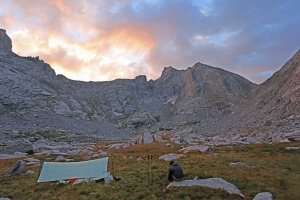
The 7.8 ounce MLD Cuben Fiber Grace Duo Tarp was our choice for the Wind River High Route: Don and I weathered a strong thunder and hailstorm at the back of Cirque of the Towers. Exposed at over 10,000 feet in a mountain meadow, it kept us and all our down gear dry.
Consider one of the pyramids without an insert and/or in Cuben Fiber. Or consider Tarps (like the Hyperlite Mountain Gear Tarps, or Mountain Laurel Designs Tarps) and Shaped Tarps if you backpack in places with occasional rain (Summer in the Sierras or the desert of Southern Utah) and/or camp in more sheltered areas (below treeline, behind large rocks, etc.). Tarps and Shaped Tarps far more floor area but a bit less headroom than a pyramid. They are significantly lighter than pyramids. e.g. a 2-personMountain Laurel Designs Cuben Fiber Grace Duo Tarp is 8 oz vs the 16 oz for the DuoMid XL. (Note: that some skilled and adventurous backpackers use Tarps above treeline in the high mountains and other exposed areas that get appreciable wind and precipitation. Some even winter camp under a tarp!)
Shelter Types and Stats
These shelters are listed by weight (high to low). In general they are also listed in increasing floor area (ft2) per pound (lb) of shelter weight (ft2/lb) . That is a conventional 4 pound tent provides only 5 square feet of floor area per pound of shelter weight, while a Cuben Fiber tarp provides an astonishing 100 to 130 square feet per pound of shelter weight—over 20x floor area per pound.
| Lb | Ft2/lb | Type of Shelter | Example | Pros and Cons |
|---|---|---|---|---|
| Tents and Tarptents | ||||
| 4 | 5.0 | Conventional retail tent |
REI Passage 1 | Pro: low price, readily available, full floor and bug protection, freestanding Con: heavy, low ft2/lb area & headroom |
| 2.6 | 8.2 | Lightweight retail tent |
REI Quarter Dome 1 | Pro: moderate price, readily available, full floor and bug protection, semi-freestanding Con: heavy, low ft2/lb area & low headroom |
| 2.1 | 14.3 | Tarptent | TarpTent Squall 2 | Pro: OK price, full floor and bug protection Con: not available at major retailers, not freestanding FYI: requires trekking poles |
| Pyramid Shelters | ||||
| 1.7 | 18.2 | Pyramid shelter silnylon w innernet |
Mountain Laurel Designs SoloMid | Pro: full rain & wind protection, large floor area, 4+ ft high, full floor and bug protection, modular – take innnet only when needed Con: moderately expensive with innernet, not available at major retailers, not freestanding FYI: requires trekking poles |
| 1.1 | 29 | Pyramid shelter silnyl w/o innernet |
Mountain Laurel Designs SoloMid | Pro: moderate price, great ft2/lb ratio, full rain & wind protection, large floor area, 4+ ft high Con: no floor or bug netting, not available at major retailers, not freestanding FYI: requires trekking poles |
| .7 | 46 | Pyramid shelter Cuben w/o innernet |
Mountain Laurel Designs SoloMid | Pro: Exceptional ft2/lb ratio, full rain & wind protection, large floor area, 4+ ft high Con: High price, no floor or bug netting, not available at major retailers, not freestanding FYI: requires trekking poles |
| 1.1 | 57.3 | Pyramid shelter (Cuben Fiber) |
Hyperlite Mountain Gear Ultamid 2 | Pro: Exceptional ft2/lb area, full rain & wind protection, large floor area, 5+ ft high Con: Expensive, no floor or bug netting*, not available at major retailers, not freestanding FYI: requires trekking poles, *can get optional floor/bug net insert |
| Tarps and Shaped Tarps | ||||
| 1.9 | 38 | Flat tarp with innernet & beak (Cuben Fiber) |
Hyperlite Mountain Gear Echo II UL Shelter System | Pro: better rain & wind protection than plain flat tarp, large floor area, full floor and bug protection, modular – take “insert” or beak only when needed Con: Very expensive, not available at major retailers |
| 1.2 | 40 | Shaped tarp Silnylon fabric (Cuben 0.7 lb and 72 ft2/lb) |
Mountain Laurel Designs TrailStar | Pro: Great ft2/lb area, moderate price, good rain & wind protection, huge 50+ ft2 floor space Con: (vs. a pyramid; less headroom, somewhat less rain & wind protection), no floor or bug netting*, not available at major retailers FYI: *there is an innernet for the TrailStar |
| 0.8 | 80 | Flat tarp Silnylon fabric |
Mountain Laurel Designs Grace Duo | Pro: High ft2/lb area, moderate price, decent rain & wind protection, huge floor space Con: (vs. a pyramid; less headroom, somewhat less rain and wind protection), no floor or bug netting*, not available at major retailers FYI *can get optional innernet, 7.8 oz in Cuben |
| 0.6 | 115 | Flat tarp Cuben Fiber |
Hyperlite Mountain Gear Echo II Tarp | Pro: Exceptional ft2/lb area, decent rain & wind protection Con: Very expensive, (vs. a pyramid; less headroom, somewhat less rain and wind protection), no floor or bug netting*, not available at major retailers FYI *can get optional floor/bug net insert |
| .5 | 130 | Flat tarp Cuben Fiber |
Mountain Laurel Designs Cuben Fiber Grace Duo Tarp | Pro: Exceptional ft2/lb area, decent rain & wind protection, huge floor space Con: Very expensive, (vs. a pyramid; less headroom, somewhat less rain and wind protection), no floor or bug netting*, not available at major retailers FYI *can get optional innernet, |

Moving fast and light along the spectacular ridge line of the GR20 in Corsica. A minimal pack (and good pre-trip training) enabled Alison and I to do a 16 day trip in under 8 days.
To save as much as 10 to 12 pounds with with the minimum of effort, look at The Big Three. 1) Backpack, 2) Tent/Shelter, and 3) Sleeping bag (or quilt). The lighter versions of these are just as functional as their heavier counterparts. They will carry your load and keep you warm and dry. The only thing you stand to lose is a bunch of weight off your back.
And most people do not enjoy being a pack mule. It is rarely the highlight or happiest memory of a trip. Alternatively, unburdened from the misery of carrying a heavy pack, folks become joyful and alert—in the best state of mind to appreciate everything around them—the reason they went backpacking. The Big Three is the fastest way to achieve that goal.
The Big Three
1) Take a Backpack that weighs less than two pounds
(see Recommended Backpacks)
2) Take a Tent/Shelter that weighs less than two pounds
(see Recommended Tents, Tarps and other Shelters)
3) Take a Sleeping bag that that weighs less than 1.5 pounds
(see Recommended Sleeping Bags and Quilts)
© Jaeger Shaw, Sustain Succeed LLC, and AdventureAlan.com, 2000-2023 | All Rights Reserved
Unauthorized use and/or duplication of this material without express and written permission from this site’s owner is strictly prohibited. Brief excerpts and links may be used freely without express and written permission, provided that full and clear credit is given to AdventureAlan.com with appropriate and specific direction linking to the original content.
You make Adventure Alan & Co possible. When purchasing through links on our site, we may earn an affiliate commission at no additional cost to you.
Affiliate Disclosure | Privacy Policy | Terms and Conditions | Contact Us

